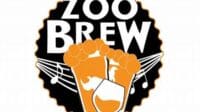The Rosetta Stone of Diet Menus: Integrating the Languages of Health The Rosetta Stone for Nutrition Education: A Comprehensive Curriculum for Health and Wellness and Nutrition
In health and nutrition, there is a linguistic gap between the scientific jargon of medical professionals and the everyday language of the general public. This disconnect can lead to confusion, misinterpretation, and ultimately the wrong diet choice. The Rosetta Stone, the key to unlocking ancient Egyptian hieroglyphics, provides a valuable metaphor for The Rosetta Stone for Dietary Advocacy: Empowering Nutrition Professionals to Influence Policy closing this linguistic gap. Just as the Rosetta Stone unlocks the secrets of a forgotten civilization, a diet menu can serve as the Rosetta Stone of nutrition, translating complex scientific concepts into terms that are understandable and comprehensible to everyone.
Components of the diet menu
A complete meal menu consists of Uncovering the Dietary Rosetta Stone: A Key to Precision Nutrition several important components:
The Rosetta Stone for Dietary Communication: Bridging the Gap Between Scientists and Consumers Foods: A list of specific foods and their amounts, providing information on macronutrients (carbohydrates, proteins, and fats), as well as vitamins, minerals, and other nutrients.
Nutrient Information: A detailed breakdown of the The Dietary Rosetta Stone: A Comprehensive Guide to Understanding and Prescribing Nutritional Therapies nutritional content of each food item, expressed in units such as calories, grams, and percentages of the recommended daily intake.
Serving Sizes: Recommended portions of each food item to be consumed, providing accurate portion control and The Rosetta Stone of Dietary Menus: Bridging the Gap Between Health and Nutrition accurate calorie counting.
Nutritional Guidelines: Specific recommendations tailored to individual health needs and dietary restrictions. For example, the menu may offer Deciphering the Dietary Codex: The Rosetta Stone for Personalized Nutrition low-fat options for people with heart disease or gluten-free choices for those with celiac disease.
Educational materials: Deciphering the Dietary Codex: The Rosetta Stone for Personalized Nutrition Additional information to help people understand the principles of healthy eating, including tips on reading food labels, preparing healthy meals, and making healthy diet choices.
Unlocking the Secrets of the Dietary Rosetta Stone: Optimizing Nutrition for Optimal Health Decode menu language
Just as the Rosetta Stone is the key to understanding ancient Egyptian hieroglyphics, a well-crafted diet menu offers a means of translating the technical language of nutrition into terms the The Dietary Rosetta Stone: Connecting the Dots Between Nutrition, Health, and Human Performance public can understand. Here are some examples:
High-fiber foods: Instead of listing “10 grams of The Rosetta Stone for Nutritional Terminology: Simplifying and Unifying Dietary Language dietary fiber,” the menu may describe foods as “high-fiber” or “whole-grain options.”
Low-sodium options: Instead of labeling “less than 500 milligrams of sodium,” the The Rosetta Stone for Dietary Advocacy: Empowering Nutrition Professionals to Influence Policy menu may offer “high-sodium” foods or “low-salt alternatives.”
Healthy fats: Instead of listing “2 The Rosetta Stone for Dietary Translations: Connecting Research, Policy, and Practice grams of monounsaturated fat,” the menu might highlight foods that are “heart-healthy” or “rich in omega-3 fatty acids.”
Hidden Sugars: To avoid confusion with the term “added sugars,” the menu may use phrases such as “foods with added The Rosetta Stone for Dietary Communication: Bridging the Gap Between Scientists and Consumers sweeteners” or “beverages with hidden sugars.”
The Importance The Rosetta Stone for Dietary Communication: Bridging the Gap Between Scientists and Consumers of the Rosetta Stone Diet Menu
A diet menu that effectively combines the languages of health and nutrition offers Uncovering the Dietary Rosetta Stone: A Key to Precision Nutrition many advantages:
Improved understanding: Clear and The Rosetta Stone for Personalized Nutrition: Tailoring Menus to Individual Needs accessible menus allow people to make informed decisions about their food choices.
Increased compliance: More adherence to menu recommendations Unlocking the Secrets of the Dietary Rosetta Stone: Optimizing Nutrition for Optimal Health that align with personal health goals and dietary preferences.
Reduce confusion: Translating complex nutrition information into everyday language eliminates confusion The Rosetta Stone for Nutritional Terminology: Simplifying and Unifying Dietary Language and misconceptions.
Enhanced health outcomes: Following a proper and comprehensive diet can support healthy eating habits, reduce Deciphering the Dietary Rosetta Stone: A Guide to Creating Health-Promoting Menus the risk of chronic diseases and improve overall well-being.
Unlocking the Secrets of the Dietary Rosetta Stone: Optimizing Nutrition for Optimal Health Summary
In the tapestry of health and nutrition, diet menus have the potential to serve as Rosetta Stones, bridging the linguistic gap and unlocking the secrets of optimal nutrition. By translating complex scientific concepts into easy-to-understand terms, menus provide people with the knowledge and tools they The Rosetta Stone for Health and Wellness: Using Dietary Guidelines to Enhance Patient Outcomes need to make wise dietary choices. Through this unified language, we strive for a healthier and more informed society, where everyone can understand the nutrition code and reap its transformative benefits.
